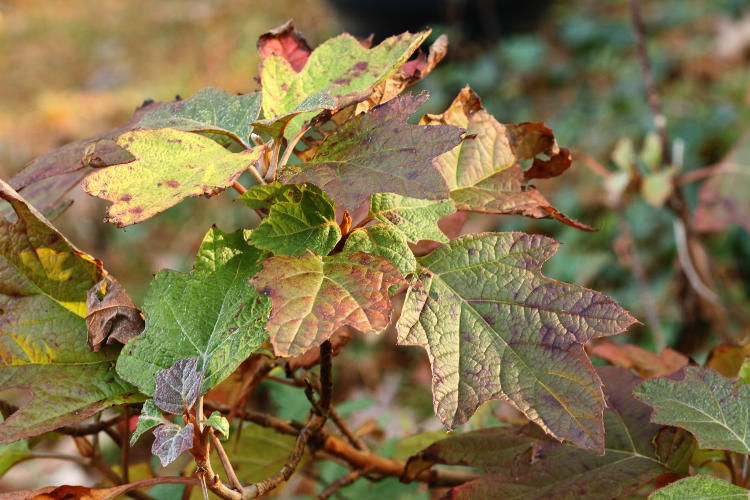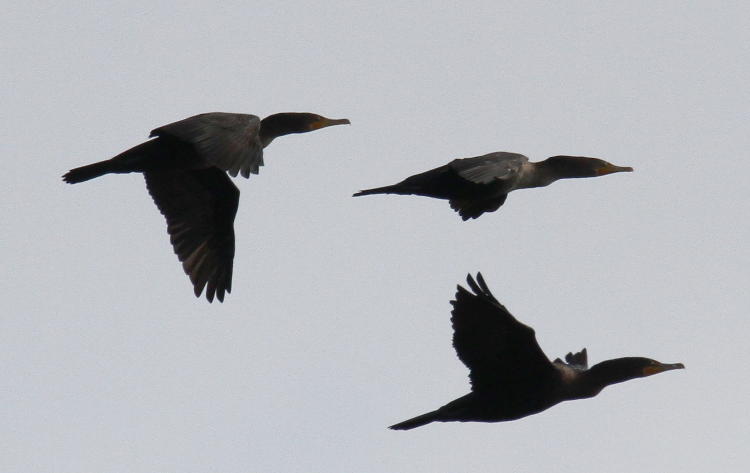
It’s very early morning right now, or “night” as most would call it, and I’m waiting to see if the moon is going to appear – if my timing is right, I might be able to catch sunset on Tycho, as frequently mentioned (like, in the previous post.) The weather report says it’s supposed to be clear today after being partly cloudy yesterday, but neither of those matches the overcast conditions we have now. So while we’re waiting to determine if the meteorologists completely suck, we might as well see what kind of fall colors are to be found.
Except… apparently our abelia bush (Caprifoliaceae) has been confused by the brief shock of cold weather and the adequate rains after a long drought, or has not seen its shadow or something, because it’s blooming. Well, okay, it has one bloom, perhaps a sentry. Since I was doing some lens and body tests yesterday, I fired off a few frames.
Nearby, one of the oak-leaf hydrangeas (Hydrangea quercifolia) that have been slowly getting a toehold in our rotten soil here was showing some of the autumn coloration that they’re known for and the reason we planted them, so I took a few of that, too.

This was taken in natural light, so you will note that it is much better than the overcast we are currently experiencing, of course. We are well away from the August holiday, and yet still able to celebrate it handily – funny, we seem able to be celebrate it damn near any day of the year, if my experience is some indication.
Actually, I just checked out there now, and the moon is faintly visible among mixed clouds and haze, so, maybe – we’ve actually had a light rain (also not predicted) since I started editing the photos for this post. I’d say be patient, but since this is a blog and not some kind of feed, and the more recent posts appear above the older ones, you likely already know if I was successful. You could leave a comment, so I know if I’m wasting my time waiting or not.
Meanwhile, one more shot just for the curiosity of it. The testing I was doing involved seeing if I could improve autofocus tracking, as mentioned previously, and so far it seems successful, but the acid tests have yet to come. While doing this, however, I followed a small flock of double-crested cormorants (Phalacrocorax auritus) as they passed, and the tight cluster they produced made it easy to do all three in a decent image, though largely silhouetted.

I feel obligated to mention that this is a trick of perspective – they’re not that buddy-buddy, but spaced further apart along our axis of sight. C’mon, you couldn’t tell that from the 7% difference in sizes between the three? Sheesh.
By the way, we really did have the partly-cloudy conditions predicted then, so chalk one up for the weatherpeeps. Unfortunately, this means that at any given time while shooting birds in flight, they may be against blue sky, a mix, or full clouds as seen here. I could easily have timed it to be against blue (and did,) but not while they were so compact within the frame. So it goes. I could always GIMP it in…



















































